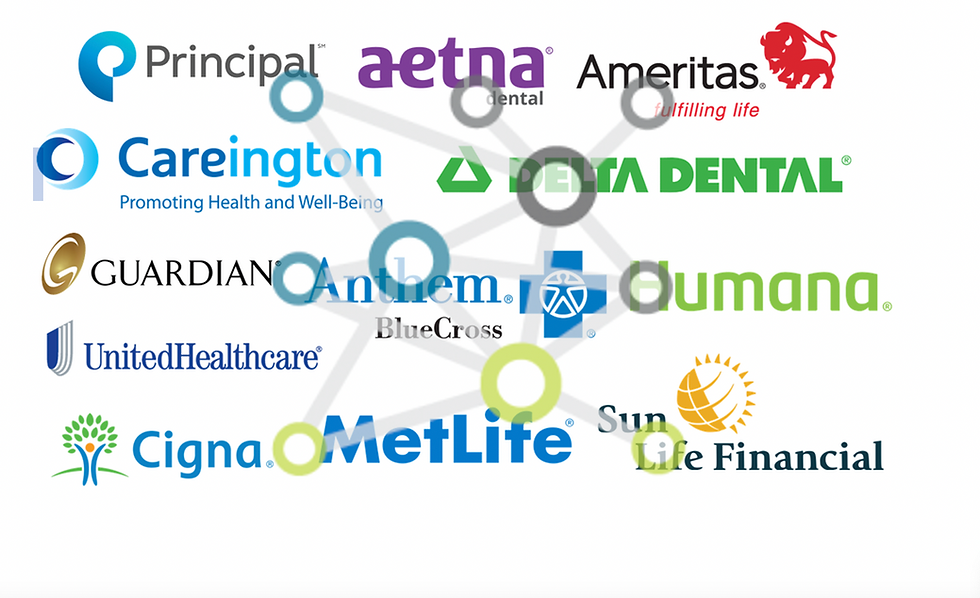Dental Insurance Companies: Bewilderness to Clarity
- Kathan Mehta

- Aug 8, 2023
- 4 min read
Updated: Aug 2

It's been difficult times – industry-wide as well as economically. AI being questioned already with lawsuit over a major insurance company giving out denials inadvertently. Moreover, the overall need to compete in this ever-changing environment are encouraging and pushing investors to try more innovative ways to generate revenue with minimal spending. Healthcare industry stand at a tangent here. We all know that no matter how much the healthcare industry gets monetized- it's ultimately a PATIENT-CENTRIC SERVICE industry with a SOCIAL WELFARE intent. This will be one of my many attempts to maximize healthcare outcomes in the most optimal fashion with patient experience and quality care as the central goal and let the money follow.
As the saying goes, “Follow the money” -let's try to look where does the money come from?– one of the major sources of funding remains from the insurance companies. Insurance companies do in fact gain some funding from government sources (Tax-payor’s money). According to a survey by CBO and JCT, the federal government issued a net subsidy of $920 billion in 2021 and is expected to spend $1.4 trillion in 2030. Of course, government subsidies are for public welfare and promote easy healthcare utilization.

Courtesy: https://www.cbo.gov/publication/56571
According to another report, government spending is approximately $1.6 trillion on healthcare programs and services. Quickly shifting our focus to the dental industry- according to ADA report in 2021, total utilization behind dental needs (Funding from all the sources) was approximately $162 billion which is only 3.7% of total healthcare utilization (Healthcare industry stands at $4.3 trillion cap in 2021) . There is untouched potential to increase dental utilization, specifically from insurance reimbursements by maximizing negotiated rates and minimizing leaks.
The biggest challenges to be addressed which lots of big players in the industry are already addressing (Thanks to Conferences and DSOs which have brought many dental providers together) are patient acquisition and revenue cycle optimization. At this point, I want to highlight that all players (Dentist- - - Underwriter- - - Insurance) work to maximize profits. The insurance companies (Sharks) -which has the upper hand of utilizing advanced technology and funding from the medical industry into catching mistakes and prevent money from leaking at very early stages in the dental industry. A lot of tools like recoupments, delayed payments, administrative denials, and credentialing factors to name a few are used to prevent payments to providers. An important point to note here is- Care does not stop despite these roadblocks! (Kudos to all the providers out there) Contracted Rates and fee negotiations (which usually reduce reimbursements) are impacting this utilization directly in an inverse manner to overall utilization. According to one article, which broadly describes the menace created by Cigna Insurance for forcing providers to reduce fees.
Understanding more about insurance companies’ nexus, I will ponder more details on how many third-party organizations have been created to create a more win-win situation. Some of the insurance company networks in existence currently are:
Shared- Network Agreements: PPO insurance carriers get into shared agreement with one or more insurance carriers. It is also called the “Leased provider panel.”
Umbrella Networks: Network companies’ contract with PPO insurance companies and dental providers and agree to reimburse using negotiated fees schedules. In my experience, Careington is one of the bigger umbrella networks providing credentialing services and better fee schedules.
According to an article published by Henry Schein, studying your participating Insurance Plans is the most important step before even undertaking a project to maximize insurance reimbursements. I have created a worksheet to give a head start on conducting this research.
Few important steps to follow:
1) Thoroughly research which insurance plans are prevalent in the vicinity surrounding your dental office. Market research reports are readily available for a few hundred bucks.
2) Determine which insurance companies are needing to be contracted with. Many times Out of network benefits are more than being in-network.
3) Proactively research UCR fees in the zip code and negotiate the fees with insurance companies. There are many third-party companies available to do negotiations.
4) Determine if direct contracts are beneficial or umbrella networks. Remember that you won’t be getting the best deal for all the insurances because of the overlaps. So, the Most utilized insurance company should be prioritized first. For instance, an insurance company participating with multiple networks will follow the contract which have lowest reimbursement.
Your dental practice database is a very huge source of patient dataset which have all the answers hidden within itself. To name a few- comparing and contrasting revenue generated per insurance company against the patent visits, based on the EOB received – identifying the UCR fees per insurance, performing hypothetical analysis to calculate waste (to be discussed more in upcoming reviews), use Pareto Charts and five Ss (Sort- Straighten- Shine- Standardize- Sustain) principles to identify the most important insurances, monthly and quarterly review of insurance policies based of group numbers and utilizing group numbers for patient acquisition tactics. As a dentist, it will take an investment of a weekend or two to take a targeted patient acquisition approach and keep on repeating the same process until its error-free.
A detailed exercise is highlighted in the spreadsheet as well:

To conclude, an average preventative dental visit costs an average of $100 bucks, so it takes a lot to build millions. Bringing in awareness about one’s immediate surroundings, patient base and insurance coverages do help in building the strong base recurring revenue and increase care per visit.
Further read:







Comments